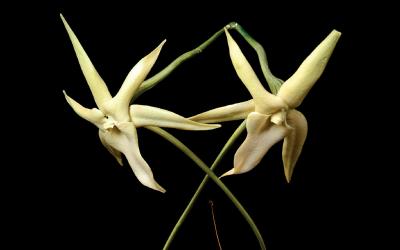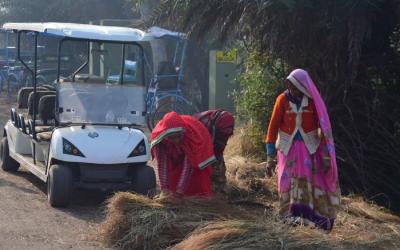The challenges posed by the skyrocketing population to India’s food security, already under strain from land shortages and the agricultural crisis, are enormous. Climate change and extreme weather events will further impact agricultural production, disproportionately affecting vulnerable groups through higher food prices, lost livelihood opportunities, adverse health impacts, and displacement (IPCC 2018). With its large rural population, particularly those engaged in farming who rely heavily on the monsoons, India stands to be severely impacted by climate change. Alongside food security, alleviating malnutrition, particularly among women and children remains a challenge. The challenge of ensuring food and nutritional security of its exploding population, while grappling with the negative impacts of climate change and environmental stresses is a huge concern for India.
Conservation of Agro-biodiversity, especially indigenous wild crops, is essential to ensuring continued food security. Emphasis on ex-situ and in-situ conservation of wild food plants, conserving biodiversity in agricultural landscapes through measures such as agroforestry directly contribute to enhancing nutritional security by providing tree foods such as wild edible fruits and leafy vegetables, as well as other wild food products. Nutritional security is vital to having a healthy population and as a consequence to national well-being. A sustainable use of biodiversity in agriculture will lead to improved agricultural productivity, enhanced food and nutritional security, and provide diverse livelihood opportunities.
The concept of maintaining a balance between land sharing, where agriculture is integrated with biodiversity through ecologically friendly food production methods (“land sharing”), and land sparing, by keeping a portion of land “spare” solely for conservation (“land sparing”) is one of the options to reconcile biodiversity and agriculture. This practice is also termed as wildlife friendly farming and studies have shown that sparing land can significantly enhance biodiversity. The wise use of community managed resource commons, such as village grazing lands, ponds, and forests can significantly contribute to conservation, especially of agro-biodiversity. The use of such approaches as well as many others have been shown to significantly increase the biological and landscape diversity while also while also lowering nutrient leaching and soil erosion.
Policy design towards biodiversity based enterprises and strategic land-use planning for farming, protection and restoration of farm landscapes will help restore biodiversity. Sustainable use of biodiversity in agriculture can contribute to food and nutritional security and increased livelihood opportunities, and these will enhance India’s ability to meet the UN Sustainable Development Goals 2030, specifically poverty eradication, eliminating hunger and protection of biodiversity. Further research and engagement between multiple government and non-government institutes will produce policy outputs that can mitigate biodiversity loss while optimizing agricultural productivity and enhancing food and nutritional security.




